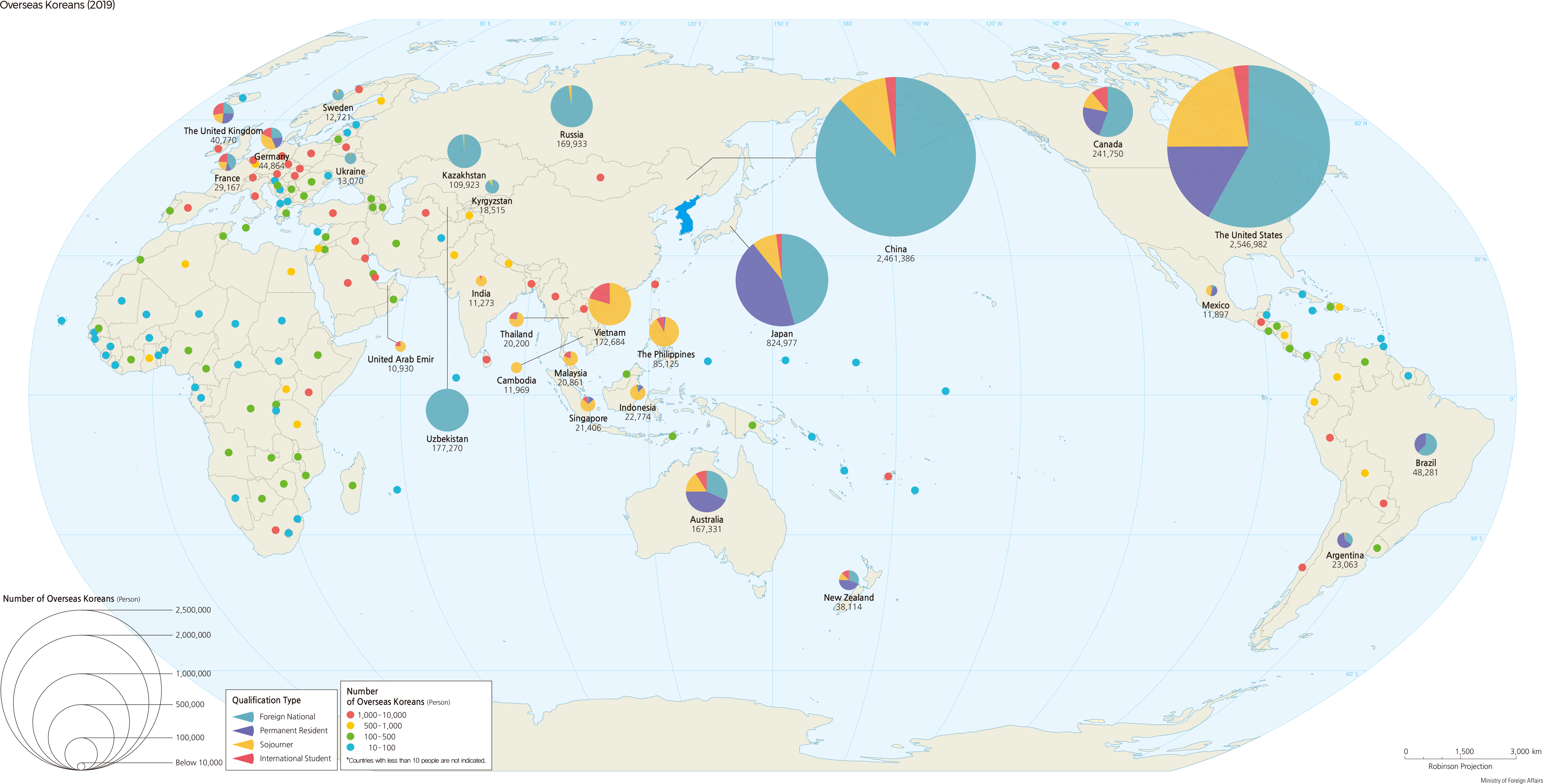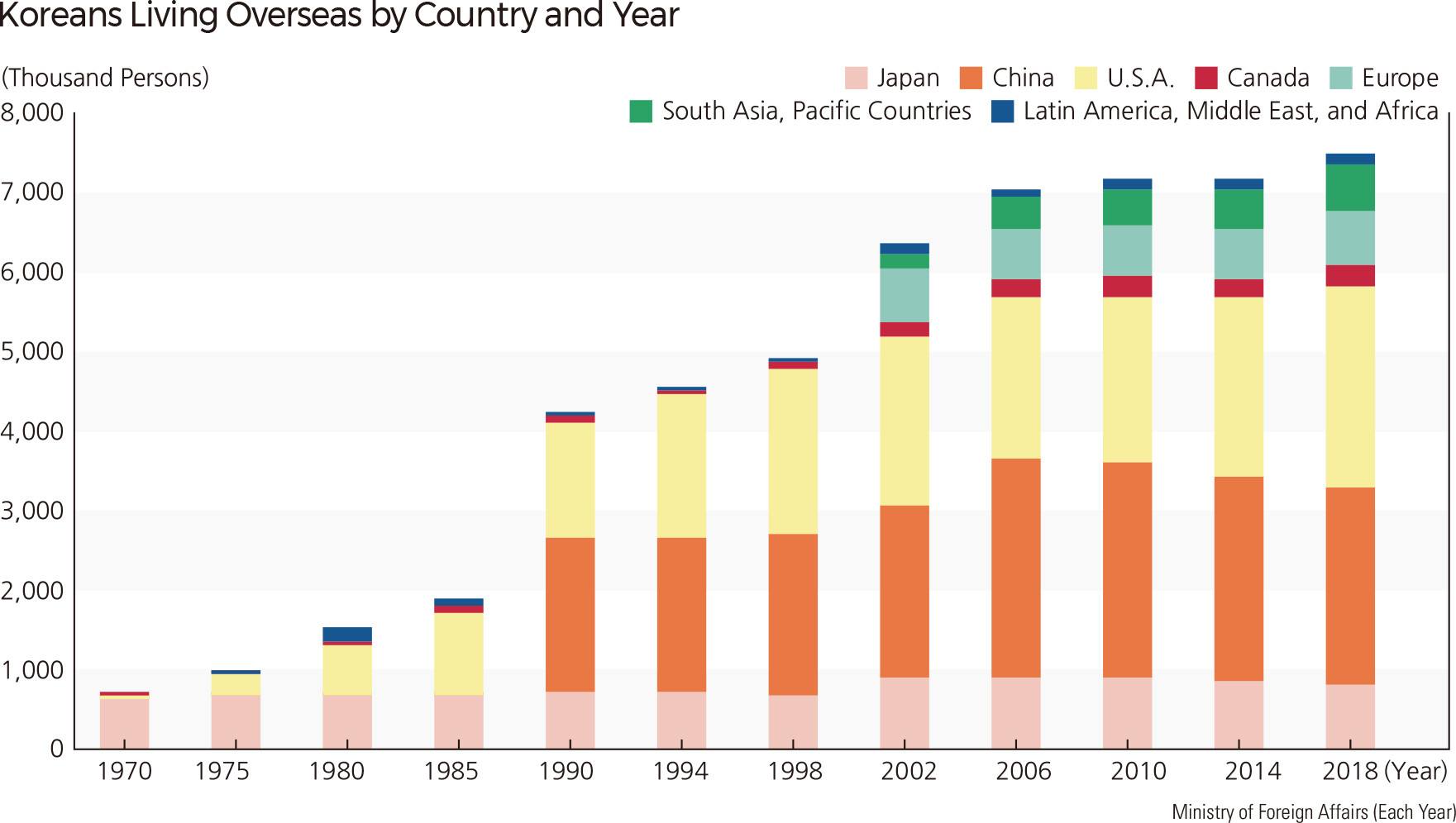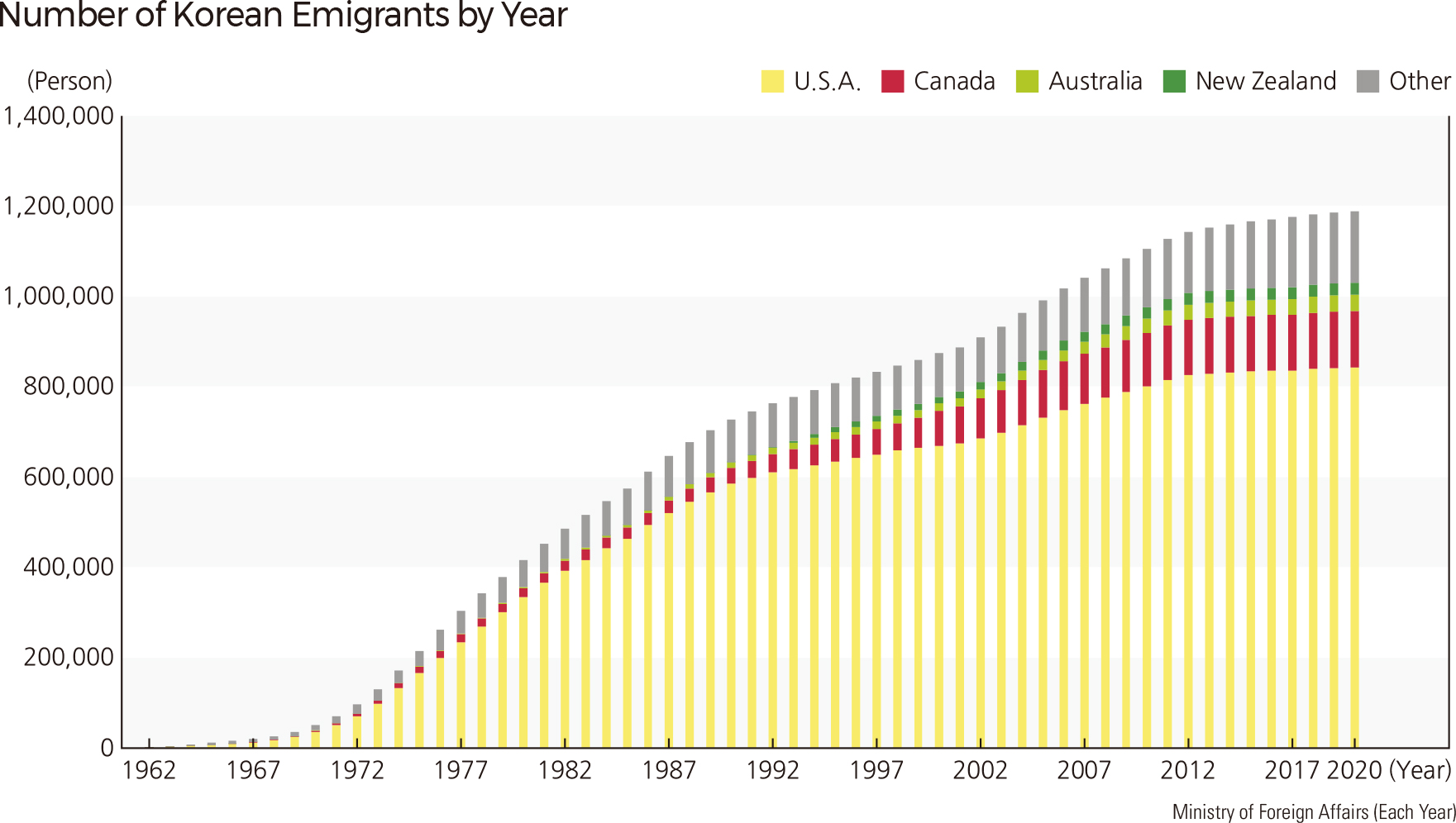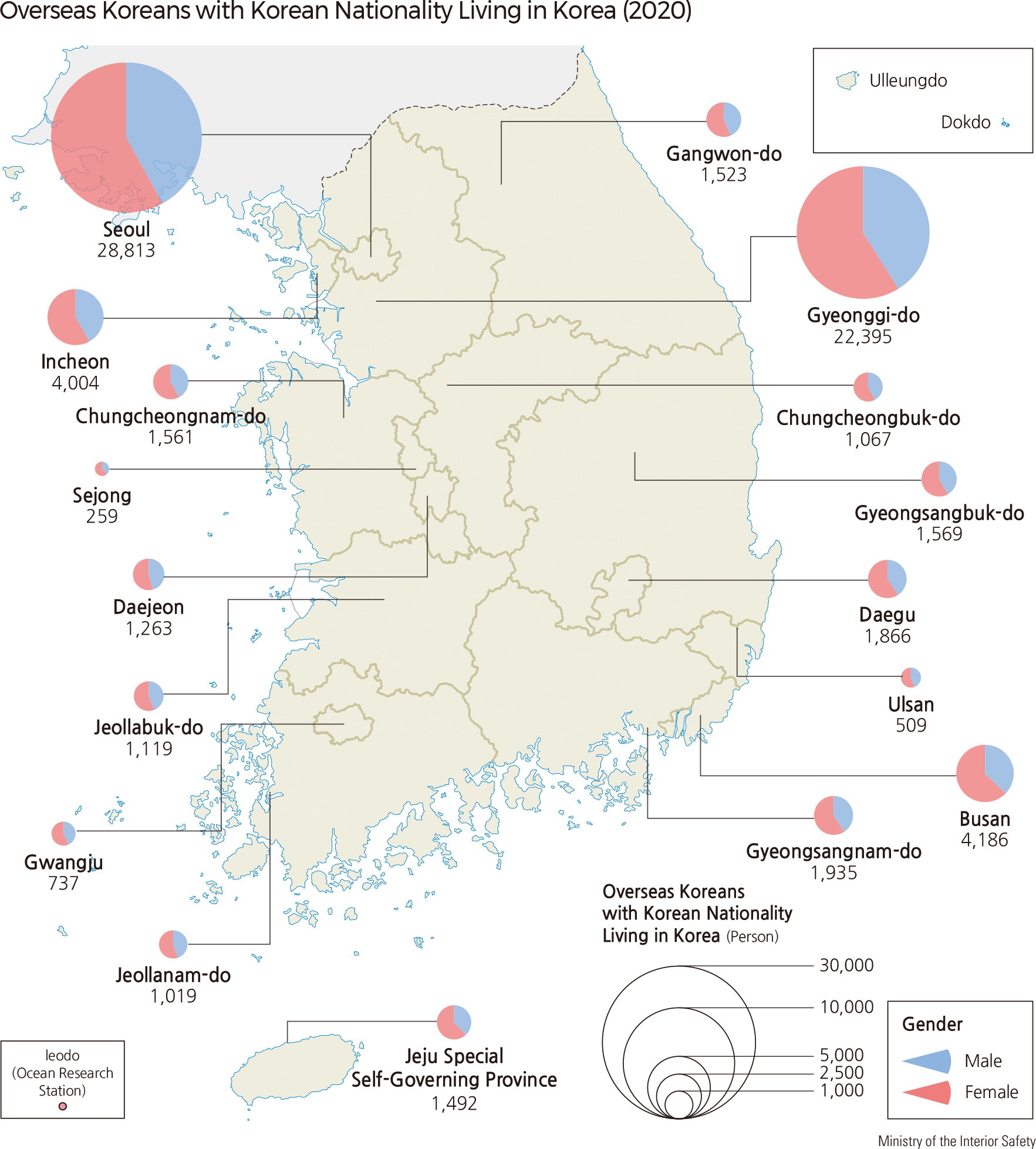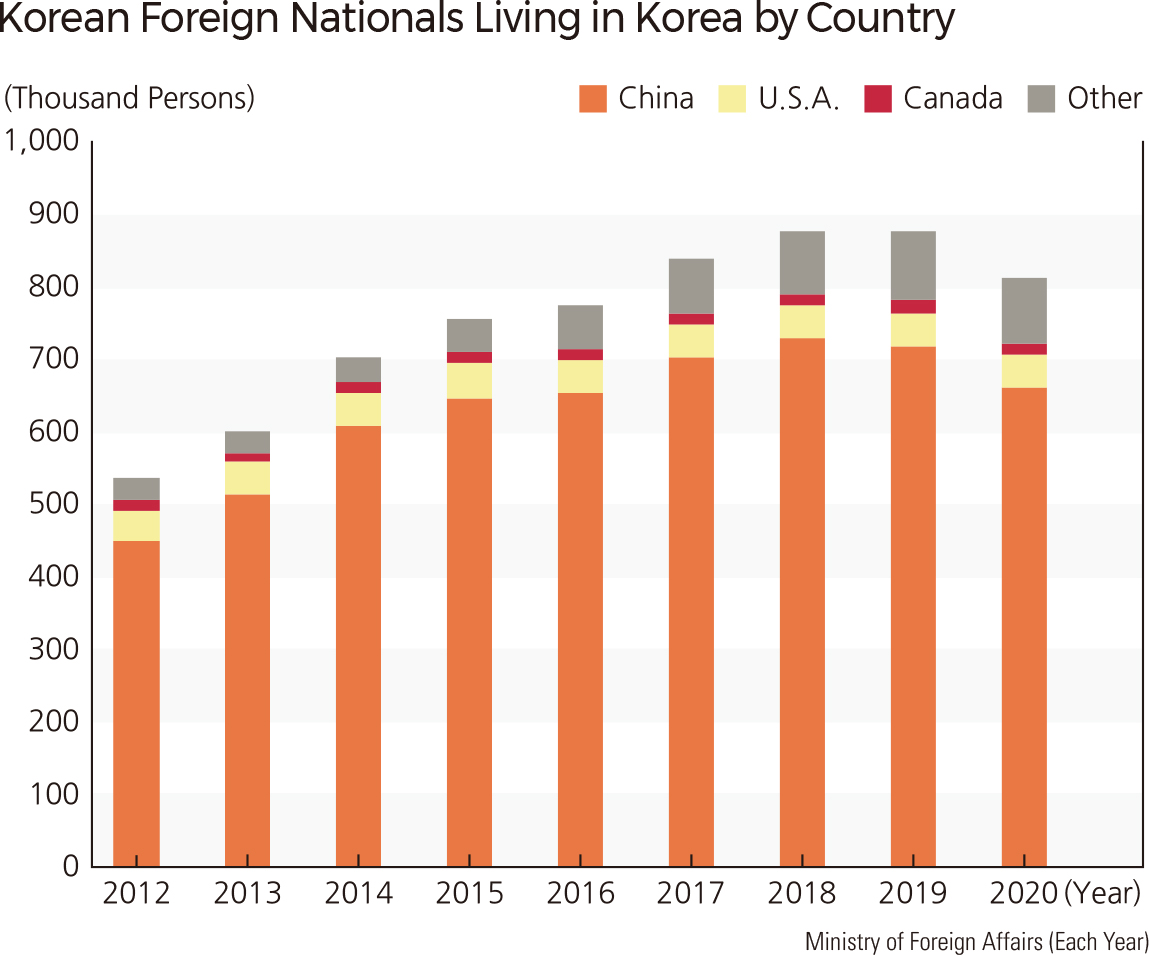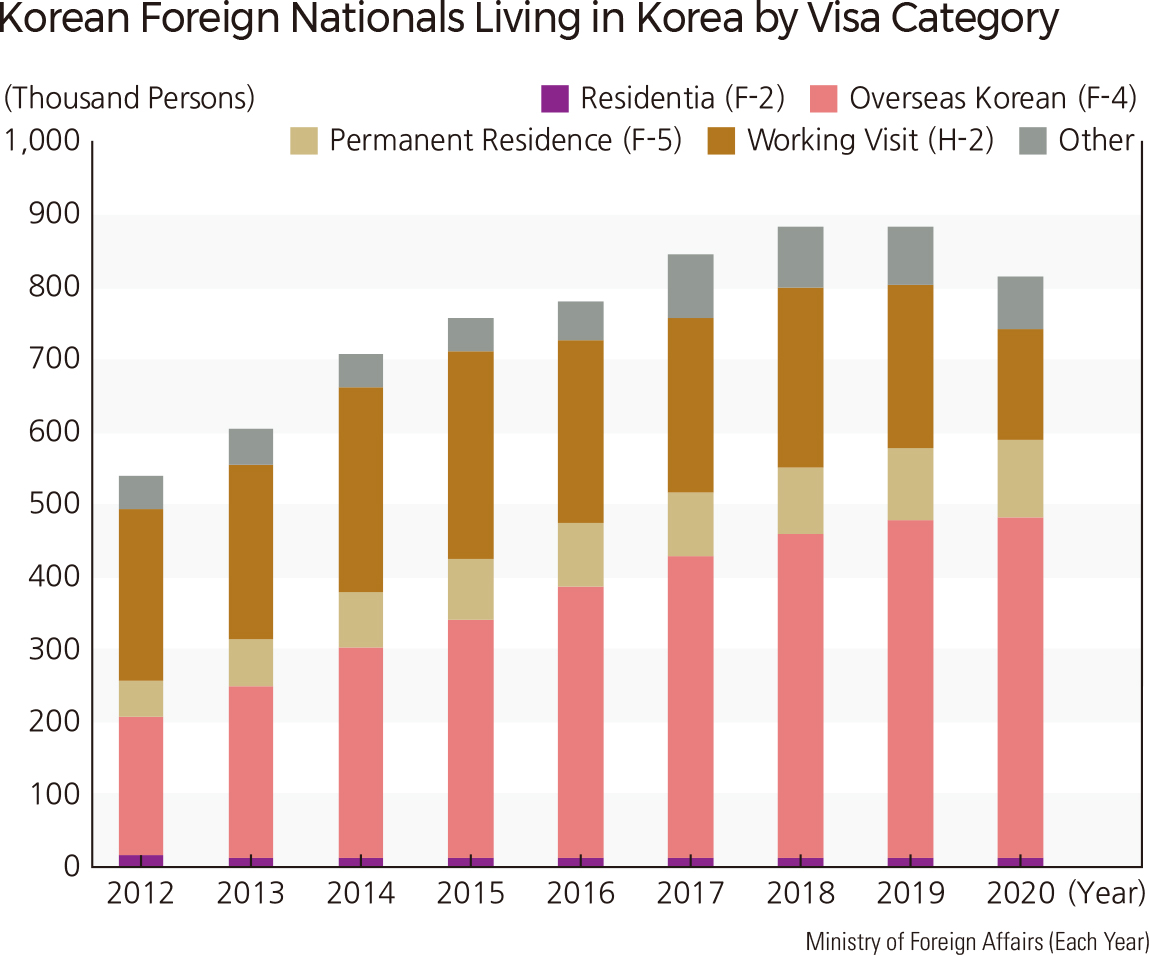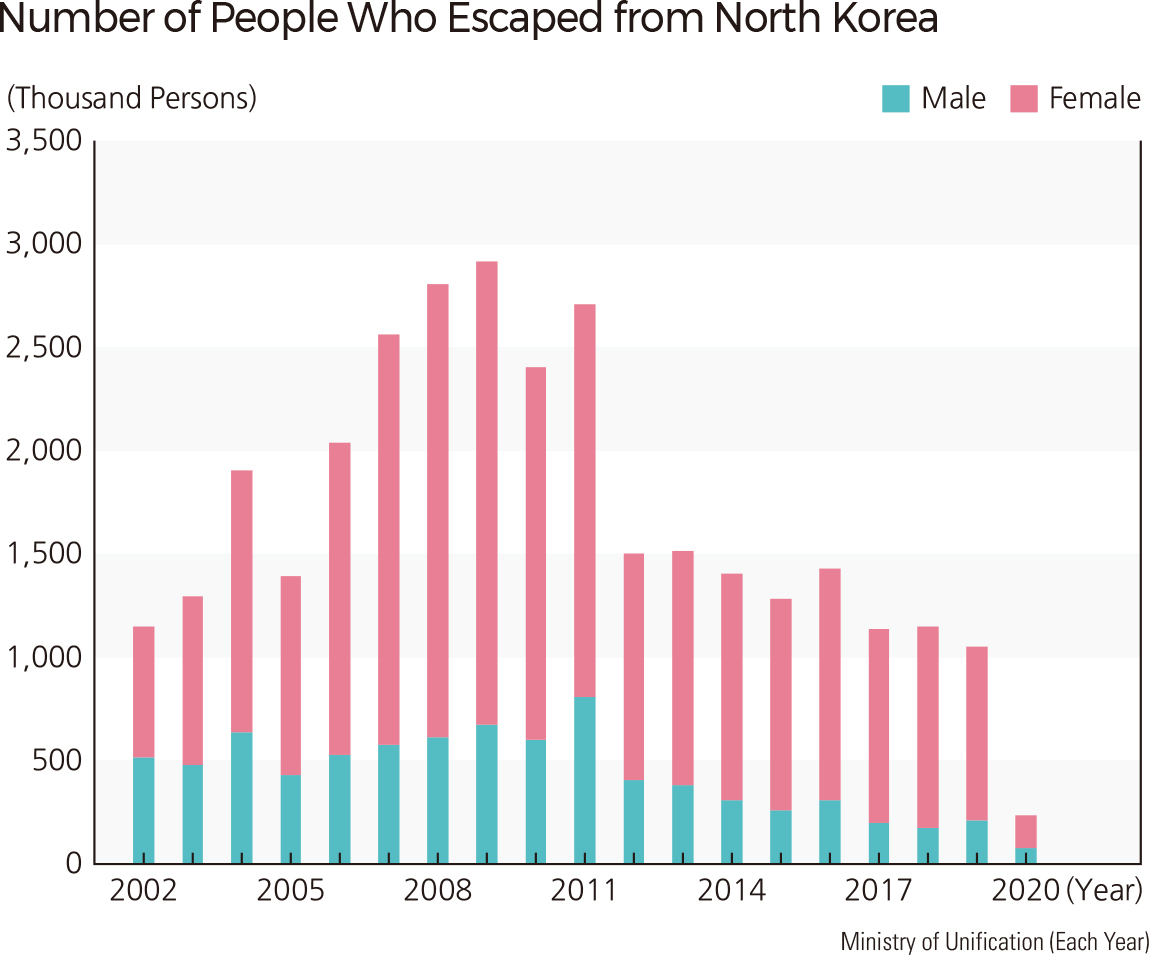English III 2021
Overseas Koreans are categorized into Korean nationality and foreign nationality. Korean nationality refers to Korean nationals who have acquired permanent residence in a foreign country or who reside in a foreign country for the purpose of permanent residence. A Korean compatriot with foreign nationality is a person prescribed by Presidential Decree among those who have held Korean nationality or who have acquired foreign nationality as a direct descendant of the Korean national. According to the statistics produced every two years regarding overseas Koreans, the number of overseas Koreans amounted to 7.49 million as of December 2018, with the largest number living in the United States, China, Japan, and Canada in that order. Looking at overseas Koreans by qualification, foreign nationals account for 4.81 million, or 64%, permanent residents, or 1.03 million, or 14%, general residents, 1.36 million, or 18%, and international students, or 290,000, or 4%. The United States, China, Canada, and the former Soviet Union have a high proportion of foreign nationals (citizens), and Japan, Latin America, and Oceania have a high proportion of permanent residents. On the other hand, Southeast Asia nations have more general residents than foreign nationals or permanent residents. Overseas Koreans have changed over time. Until the 1970s, the number of overseas Koreans residing in Japan was the largest. Since the 1970s, the number of overseas Koreans residing in the United States increased the most due to immigration to the United States and an increase in the number of descendants of immigrants. In the 1990s, after establishing diplomatic ties with China, ethnic Koreans in China were included in the statistics of compatriots. In the 2000s, ethnic Koreans in the former Soviet Union were included in the statistics of compatriots. Since the mid-2000s, overseas Koreans living in Southeast Asia such as Vietnam and the Philippines, Australia, and New Zealand have increased rapidly. Meanwhile, from 1962 to 2020, 1.19 million domestic Koreans immigrated abroad. By country, the largest number went to the United States (840,000 people), Canada (130,000 people), Australia (40,000 people), and New Zealand (30,000 people). The number of overseas migrants has declined sharply since the mid-2010s. In 2020, about 890,000 overseas Koreans with foreign nationality resided in Korea: 810,000 foreign nationalities and 80,000 Korean nationalities. Among the 810,000 foreign nationalities, Chinese compatriots are the largest. Looking at their status of stay in Korea by the type of visa, they are in the order of Overseas Koreans (F-4), Working Visit (H-2), Permanent Resident (F-5), and Long-Term Residency (F-2). 370,000 overseas Korean, 79% of the 470,000 F-4 visa holders who should report their place of residence in Korea, live in Gyeonggi-do (192,000), Seoul (143,000), and Incheon (30,000). In 2020, the number of overseas Koreans with foreign nationality decreased significantly compared to the previous year due to the impact of COVID-19. Overseas Koreans with Korean nationality living in Korea may register as overseas Koreans. In this case, economic activities such as identification through resident registration and financial and real estate transactions are convenient. When entering and leaving Korea for the purpose of staying for more than 30 days, they report their arrival and departure. As of 2020, the number is 80,000, of which 55,000, or 75%, are in Seoul (29,000), Gyeonggi-do (22,000), and Incheon (4,000). The number of females residing in Korea is significantly higher than that of males (sex ratio 71.2). On the other hand, the number of North Korean defectors entering Korea, which had recorded between the 1,000 and the late 2000s since 2002, was only 229 in 2020. |
